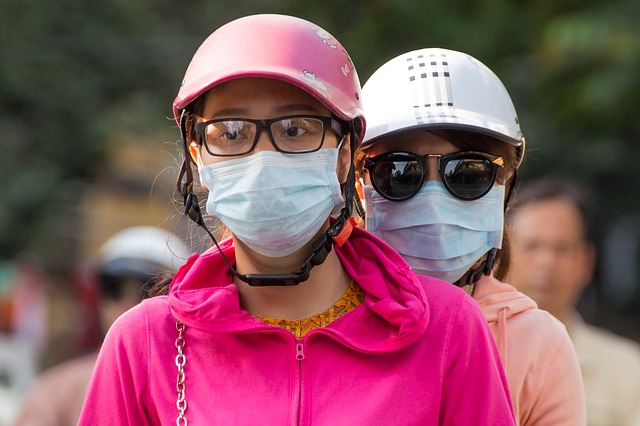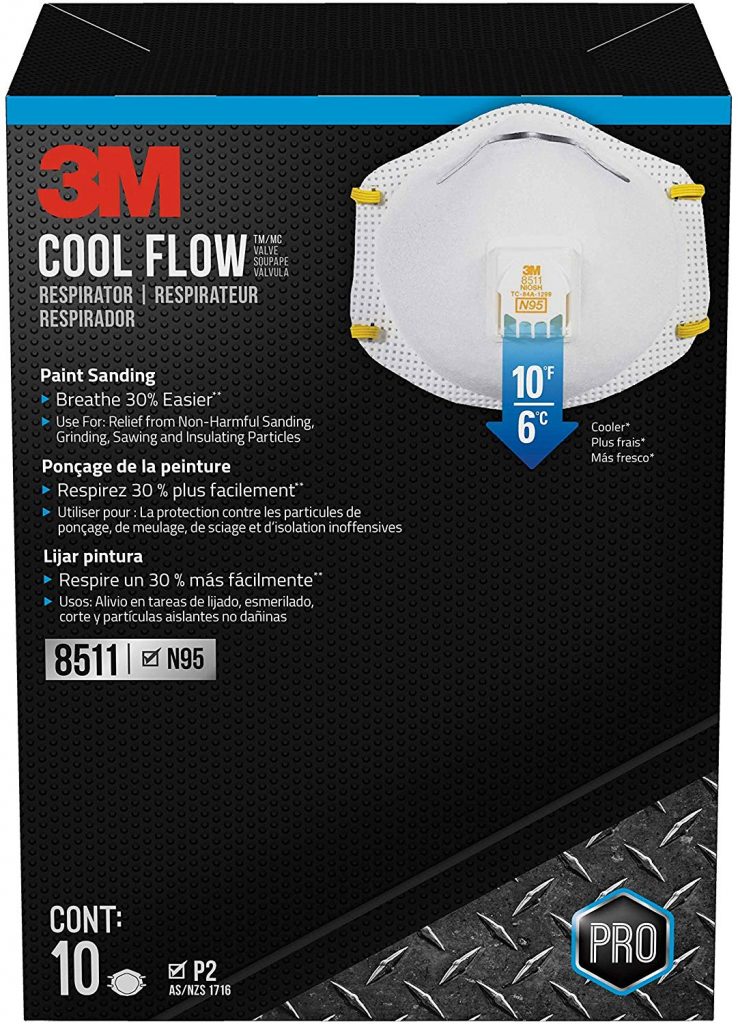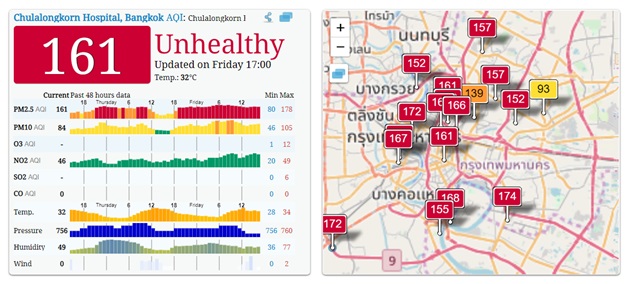
With air pollution particles in Bangkok at extremely high levels, many people are considering wearing an air mask to prevent health problems caused by breathing in the particles.
The Thai government is also recommending and distributing air masks in Bangkok while the high levels of pollution particles in the air continue to occur.
Will wearing an air mask in Bangkok help with pollution, though, or are you wasting your time? And, if an air mask can prevent you from breathing in PM 2.5 particles, which air masks are better than others?
Wearing an air mask in Bangkok
There are currently three types of air masks that are usually used in most places of the world — surgical masks, industrial air masks and N95 masks.

Surgical masks — Although you will see a large number of people wearing surgical masks in many Asia cities, including Bangkok, these masks will not remove PM 2.5 particles at all. In fact, when it comes to wearing an air mask in Bangkok, a surgical mask is ineffective.
This is due to the sides tending to gap open allowing the air to seep in, and the filter not filtering anything more than large particles you probably would not breathe in anyway.
This means, even wearing a surgical mask, you will continue breathing the PM 2.5 particles you were breathing in without one.
Surgical masks will, however, make you even hotter and more sweaty in Bangkok than you usually are, as they will cause your face to perspire.
Industrial air masks — Yes, some people living in Chinese cities with the world’s worst pollution do wear an industrial air mask to move around the city.
Unless you want to be the hottest you have ever been, however, and get perplexed looks from every passing stranger, an industrial air mask in Bangkok is not recommended.
Yes, an industrial air mask will prevent PM 2.5 particles from being breathed in but..you will end up looking like this.
Next…

N95 masks — If you are going to wear an air mask in Bangkok, an N95 mask is your best bet.
The 95 in the name comes from the fact that this type of air mask will block 95 percent of airborne matter, including the PM 2.5 particles found in air pollution in Bangkok.
In order to be effective, the mask must fit tightly and comfortably against your face with no gaps at all. Any gap between the mask and your skin will immediately render the N95 mask ineffective.
One thing the Thai government does not seem to be publicizing about the N95 masks they are recommending, however, is that they are ‘single-use’ only.
This means they should be thrown away after every use or, at the very least, thrown away after two to three uses.
In other words, an N95 mask worn more than a few times will be almost as ineffective as not wearing a mask at all.
It is also important to note that an N95 air mask will not work for those with beards or other facial hair, simply because it is not able to get the needed tight fit.
You can find a discussion about ‘single-use N95 masks’ here, with people using them either throwing them away or storing them correctly and thus using them for a few days.
There is also in-depth information from the U.S. Food and Drug Administration (FDA) about the N95 mask, where they also state it is for ‘single use’ only, and point out how to properly dispose of a used N95 mask.
If you are interested in specific brands of N95 air masks that should be effective during Bangkok pollution, the U.S. Centers of Disease Control (CDC) has a handy list of those they recommend as they are NIOSH-certified.
Remaining indoors during increased Bangkok air pollution instead of using a mask
There is also the option of remaining indoors as much as possible during increased Bangkok air pollution, rather than going out while wearing a mask.
Is this safer, though, or are you at as much risk at home as you are being outside?

Staying indoors can be 5 X more unhealthy?
While you may read blogs and other articles talking about staying indoors being up to five times more unhealthy than being outside, due to the supposed build-up of pollutants in a typical home, this is not actually true.
According to a study published in the Journal of Thoracic Disease, this is what is scientifically believed about staying indoors during times of high pollution:
Although ambient air pollutants such as particulate matter, ozone, and other gases infiltrate indoors from outdoors, concentrations are generally lower indoors compared to outdoors, and spending time indoors generally reduces exposure to ambient air pollutants. Indeed, environmental protection agencies in a number of countries advise members of the public to remain indoors as part of guidance to reduce exposure and thus acute health risk on high air pollution days.
The study goes on to talk about infiltration rates of pollutants indoors varying depending on the type of building the individual is in:
Infiltration rates vary widely due to differences in building structures, indoor surface materials, air handling systems, building operating conditions, and ambient environmental conditions (e.g., wind speed and direction, temperature, and air pollutant constituents). Concentrations of indoor air pollutants of ambient origin are primarily determined by the process of outdoor-to-indoor transport, which is a function of air exchange rate (building ventilation).
The study concludes the section on the risks of indoor pollution by staying indoors by stating in most cases there will be 50 percent less air pollutants in the air indoors than outdoors. As long as you keep the windows closed and, in particular, if you are using an air conditioner.
It is recommended you read the entire study if you are interested in reducing PM 2.5 levels within your home, and while being outside in Bangkok pollution as well.
After all, there are other things you can do in both situations to reduce your chances of breathing in potentially harmful air pollutants other than just wearing an air mask.
